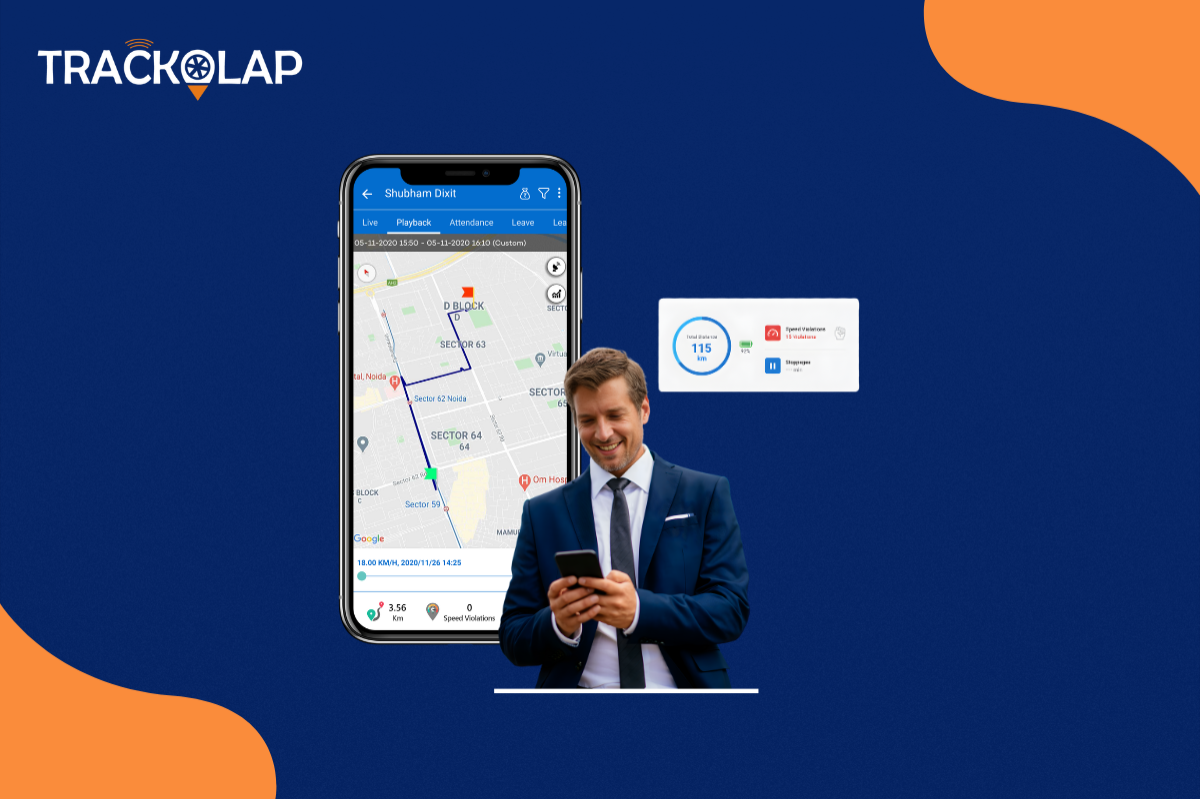
What, why, and How Should Work-from-Home Productivity Be Measured?
The traditional paradigm of work, with its structured office spaces and face-to-face interactions, has undergone a seismic shift in recent times. The global rise of remote work, accelerated by technological advancements and unforeseen circumstances, has prompted a fundamental reevaluation of how we measure productivity.
As teams disperse geographically and find themselves working from the comfort of their homes, the need to gauge and optimize productivity becomes paramount.
According to a recent survey by Global Workplace Analytics, the number of people regularly working from home has grown by 173% since 2005. This significant increase highlights not just a trend but a transformative wave in the way we approach work.
This blog delves into the intricacies of this evolving landscape, exploring the metrics that matter, the rationale behind this measurement imperative, and the remote employee management tools and strategies that can be employed to ensure a harmonious blend of autonomy and accountability.
What to Measure
As the digital workspace expands beyond the confines of the traditional office, the challenge becomes defining the metrics that truly encapsulate the essence of remote productivity. Key Performance Indicators (KPIs) for Work from Home (WFH) productivity act as the compass, guiding both individuals and organizations toward success in this dynamic landscape.
Key Performance Indicators (KPIs) for WFH Productivity
1. Output and Deliverables
Metric
Quantifiable tasks completed, projects finalized, or goals achieved.
Rationale
Focus shifts from tracking hours worked to the tangible outcomes produced. Measuring output ensures that remote work translates into concrete results.
2. Time Management
Metric
Time spent on tasks, adherence to deadlines, and effective use of work hours.
Rationale
Efficiency is paramount in remote settings. Analyzing time management provides insights into individual and team effectiveness, helping identify areas for improvement.
3. Communication and Collaboration
Metric
Frequency and quality of communication, participation in collaborative efforts, and utilization of collaboration tools.
Rationale
Remote success hinges on robust communication. Monitoring how teams interact and share ideas with the help of employee monitoring software ensures that despite physical distance, collaboration remains a driving force.
4. Employee Well-being
Metric
Employee surveys, feedback mechanisms, and indicators of burnout or stress.
Rationale
Remote work's impact on well-being cannot be overstated. Tracking employee satisfaction, stress levels, and work-life balance ensures a holistic approach to productivity, acknowledging the human element in the digital realm.
In navigating the WFH landscape, these KPIs act as beacons, providing a comprehensive view of productivity that extends beyond mere task completion. Each metric serves as a crucial component in the intricate tapestry of remote work success, offering both individuals and organizations a roadmap to navigate the challenges and opportunities presented by the virtual office.
Why Measure WFH Productivity
In the era of remote work, the act of measuring productivity transcends a mere tracking exercise—it becomes a compass guiding individuals and organizations through the intricate landscape of virtual collaboration.
The profound "why" behind measuring Work-from-home (WFH) productivity is not just a query; it's a strategic imperative with far-reaching implications for the success and sustainability of remote work models.
A. Impact on Individual and Team Performance
Significance
Measuring WFH productivity offers a nuanced understanding of individual and collective contributions in a dispersed work setting.
Rationale
By unraveling the impact of remote work on performance, organizations gain insights into the strengths and challenges faced by individuals and teams. This knowledge forms the foundation for tailored strategies that enhance productivity, fostering a culture of recognition and continuous improvement.
B. Connection to Organizational Goals
Significance
The measurement effort serves as a vital link between remote work endeavors and the overarching objectives of the organization.
Rationale
Employee productivity metrics act as a compass, ensuring that remote teams align their efforts with the broader mission and goals of the organization. This alignment is crucial for maintaining strategic coherence and driving collective success even in the absence of physical proximity.
C. Employee Satisfaction and Engagement
Significance
Measuring productivity extends beyond output, delving into the realm of employee satisfaction and engagement.
Rationale
Recognizing that success in remote work is not solely measured by completed tasks, but also by the well-being and engagement of employees. Monitoring these aspects allows organizations to adapt policies, ensuring a positive work environment that supports the holistic needs of a dispersed workforce.
D. Identifying Areas for Improvement and Optimization
Significance
Productivity metrics act as a diagnostic tool, uncovering inefficiencies and opportunities for enhancement in remote workflows.
Rationale
The measurement process goes beyond applauding achievements; it serves as a mechanism for continuous improvement. Analyzing productivity metrics with employee tracking solutions empowers organizations to identify bottlenecks, streamline processes, and optimize remote work structures, fostering a culture of adaptability and efficiency.
In essence, the act of measuring WFH productivity is a deliberate and strategic investment. It's a commitment to understanding, adapting, and thriving in the evolving landscape of work, where virtual collaboration is not just a convenience but a cornerstone of organizational success. As we embark on this journey of measurement, the "why" serves as a guiding star, illuminating the path toward a future where remote work isn't just a necessity but a realm of boundless potential.
How to Measure Work from Home Productivity
Best Practices for Measuring WFH Productivity
As the digital realm becomes the new workspace, measuring Work from Home (WFH) productivity requires a thoughtful approach. The following best practices serve as a guide, ensuring that the metrics chosen and the methods employed align with the unique dynamics of remote work while incorporating specific tools tailored for effectiveness.
● Clear Goal Setting and Expectations
Define Clear Objectives
Establish SMART (specific, measurable, achievable, relevant, and time-bound) objectives for both individuals and groups.
Transparent Expectations
Clearly communicate performance expectations, deadlines, and key deliverables to provide a roadmap for success in a remote environment.
● Regular Communication and Feedback
Frequent Check-Ins
Schedule regular virtual meetings to discuss progress, challenges, and upcoming tasks.
Constructive Feedback
Provide timely and constructive feedback to acknowledge achievements and address areas for improvement. Encourage an open dialogue for effective communication.
● Flexibility and Adaptability
Outcome-Focused Approach
Emphasize outcomes over micromanagement, allowing flexibility in work hours as long as goals are met.
Adapt to Individual Work Styles
Recognize and accommodate diverse working styles, acknowledging that flexibility enhances motivation and productivity.
● Balancing Accountability and Trust
Result-Oriented Accountability
Shift from time-based accountability to results-based metrics, emphasizing the importance of output and impact.
Cultivate Trust
Foster a culture of trust by empowering employees with autonomy and respecting their ability to manage their responsibilities.
● Employee Training on Productivity Tools
Comprehensive Training
Ensure that employees are proficient in using remote employee productivity tools and platforms.
Continuous Learning
Provide ongoing training to keep teams updated on new features and functionalities, optimizing tool utilization for maximum efficiency.
● Emphasizing Employee Well-being
Well-being Surveys
Implement regular well-being surveys to gauge the mental and emotional health of employees.
Promote Work-Life Balance
Encourage breaks, set realistic workloads, and emphasize the importance of maintaining a healthy work-life balance.
● Utilizing Productivity Tools
1. Time Tracking Software
Leverage time tracking tools like TrackOlap to monitor and analyze time spent on tasks, ensuring efficient time management.
2. Project Management Tools
Employ project tracking software to facilitate planning, collaboration, and tracking of project progress.
3. Attendance Management Tool
Implement tools like TrackOlap to monitor and manage employee attendance, ensuring accountability in a virtual setting. In navigating the intricacies of measuring WFH productivity, the integration of these best practices and specialized tools creates a comprehensive framework for success.
By fostering a culture of clear communication, flexibility, and trust, and leveraging the power of productivity tools, organizations can create an environment where remote productivity is not just measured but optimized for sustained success.
What are the Challenges in measuring Work from Home Productivity?
While the shift to remote work has brought about numerous benefits, it has also introduced unique challenges in accurately measuring and managing productivity. Acknowledging these challenges is crucial for organizations seeking to optimize their remote work strategies effectively.
1. Lack of Visibility
Challenge
The absence of physical presence makes it challenging to directly observe and assess the work being done.
Impact
Difficulty in gauging the actual effort, engagement, and focus of remote employees.
2. Time Management Concerns
Challenge
Balancing work and personal life without clear boundaries can lead to challenges in tracking and managing work hours effectively.
Impact
Inaccurate measurement of time spent on tasks and potential burnout due to extended working hours.
3. Dependency on Technology
Challenge
Reliance on various digital tools for communication and collaboration introduces the risk of technical issues.
Impact
Downtime and disruptions can hinder productivity measurement, affecting the accuracy of data collected.
4. Communication Barriers
Challenge
Virtual communication may lack the nuances of face-to-face interactions, leading to misunderstandings.
Impact
Difficulty in assessing collaboration and teamwork, potentially impacting project outcomes.
5. Resistance to Monitoring
Challenge
Some employees may perceive productivity measurement tools as intrusive and resist being continuously monitored.
Impact
Reduced morale and engagement, potentially leading to a negative impact on productivity.
6. Well-being and Mental Health
Challenge
Remote work can blur the lines between personal and professional life, impacting employee well-being.
Impact
Reduced mental health and motivation may result in decreased productivity and engagement.
7. Adapting to Remote Tools
Challenge
The rapid adoption of new tools may pose a learning curve for employees, impacting initial productivity.
Impact
A temporary decline in productivity during the transition period.
8. Team Collaboration Challenges
Challenge
A lack of spontaneous interactions and face-to-face collaboration can affect team dynamics.
Impact
Reduced synergy and creativity, potentially impacting the quality of outputs.
Take the Next Step!
Visit us to learn more about how TrackOlap can transform your remote work landscape. Schedule a demo today and embark on a journey towards a future where productivity is not just measured but optimized for sustained success.
Your remote work revolution begins with the best employee monitoring software —empowering productivity, one click at a time.






























 Back to Blogs
Back to Blogs










 D-5 Sector-59, Noida, Uttar Pradesh (India)
D-5 Sector-59, Noida, Uttar Pradesh (India) contactus@trackolap.com
contactus@trackolap.com 7011494501
7011494501










